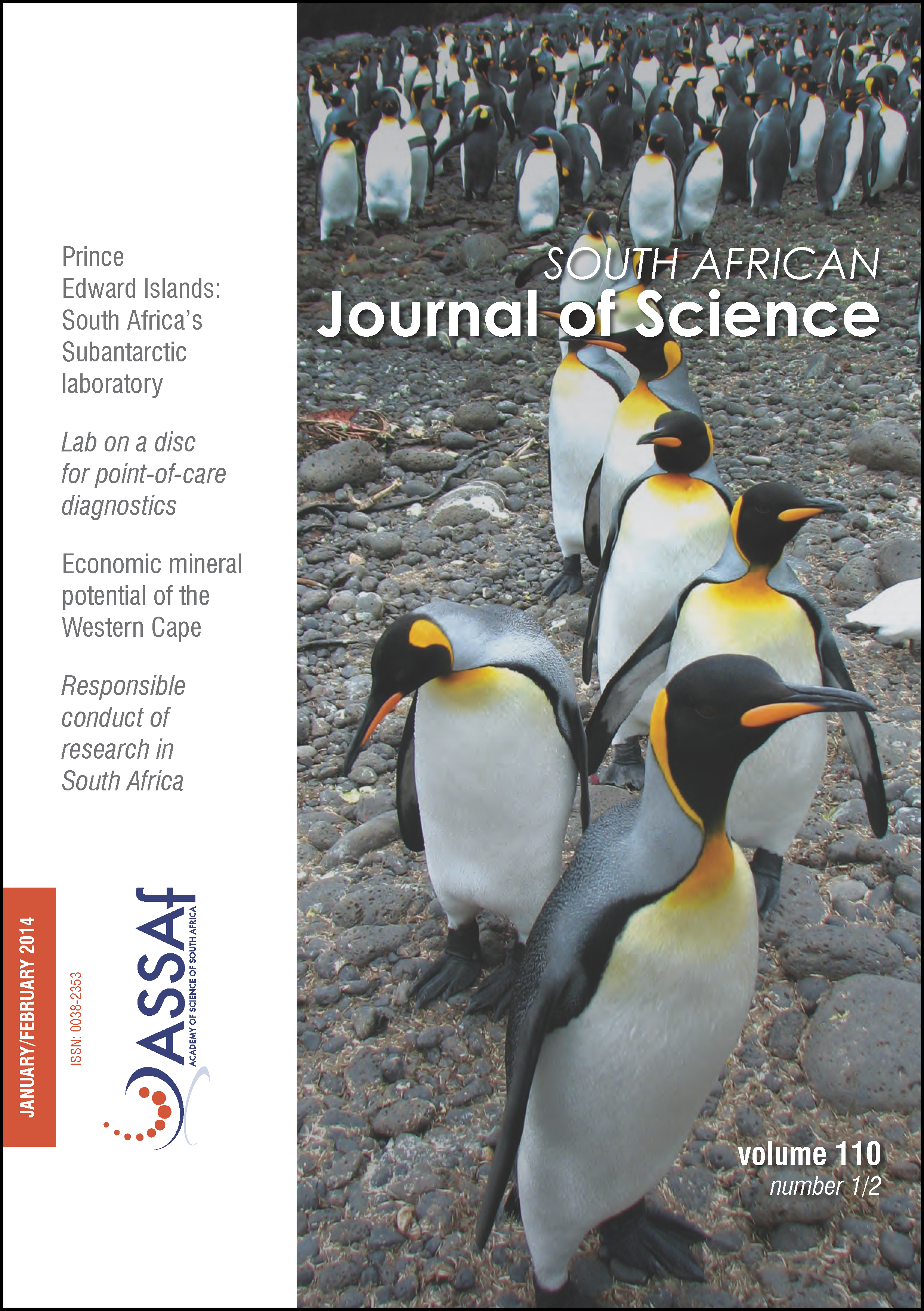Shedding light on spectrophotometry: The SpecUP educational spectrophotometer
DOI:
https://doi.org/10.1590/sajs.2014/20130096Keywords:
spectrophotometry, educational, spectrophotometer, photonics, SpecUPAbstract
Students often regard laboratory instruments as ‘black boxes’ which generate results, without understanding their principles of operation. This lack of understanding is a concern because the correct interpretation of analytical results and the limitations thereof is invariably based on an understanding of the mechanism of measurement. Moreover, a number of tertiary institutions in Africa have very limited resources and access to laboratory equipment, including that related to the field of photonics, which prevents students from acquiring hands-on practical experience. We address both of these challenges by describing how students can assemble a novel, low-cost spectrophotometer, called the SpecUP, which can then be used in a range of experiments. The same kind of information can be generated as that obtained with costly commercial spectrophotometers (albeit of a lower quality). With the SpecUP, students also have the opportunity to vary instrumental parameters and to observe the effects these changes have on their experimental results, allowing for enquiry-based learning of spectroscopic principles. The results obtained for some chemistry-related spectrophotometric experiments are described for each of the two operational modes of the SpecUP, although the instrument can be applied in fields ranging from physics to biochemistry.Published
2014-02-03
Issue
Section
Research Article
License

All articles are published under a Creative Commons Attribution 4.0 International Licence
Copyright is retained by the authors. Readers are welcome to reproduce, share and adapt the content without permission provided the source is attributed.
Disclaimer: The publisher and editors accept no responsibility for statements made by the authors
How to Cite
Forbes, P. B., & Nöthling, J. A. (2014). Shedding light on spectrophotometry: The SpecUP educational spectrophotometer. South African Journal of Science, 110(1/2), 1-5. https://doi.org/10.1590/sajs.2014/20130096
Views
- Abstract 472
- PDF 500
- EPUB 183
- XML 278












.png)